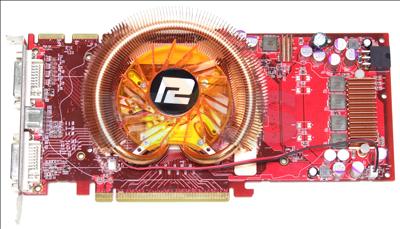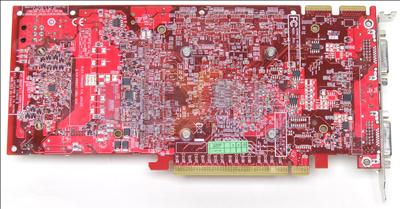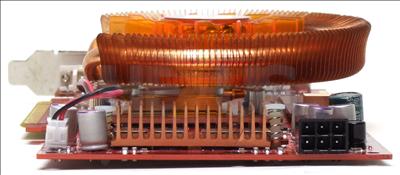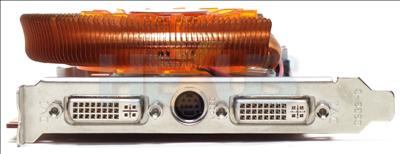Card appearance
As usual, to see what makes the HD 4800-series tick along, why not look at our architecture review.
Sporting a ZEROtherm-supplied heatsink-and-fan and running a mildly overclocked core speed of 665MHz on the GPU (compared to a stock 625MHz), the orange-coloured fan contrasts nicely against the ATI red-coloured PCB.
The memory, unlike the GPU, remains at AMD's reference clocks of 1,986MHz, however.
Unlike the top of the card, the bottom looks pretty much as expected, except for the obvious lack of a torsion-beam mounting brace.
Instead, four spring-loaded screws are what mount the cooler to the GPU with sufficient pressure.
The PowerColor PCS+ 4850 is equipped with
ZEROtherm's GX-810 VGA cooler, and it's
effectively silent, both when
idle and when in a 3D application or game.
To help cool the remaining hot components on the PCB such as the VRM circuitry and memory modules, PowerColor has utilised a couple of heatspreaders and aluminium heatsinks that are just about adequate for the job. With the exception of the larger aluminium heatsink, these all got rather toasty during operation, we found.
You can see quite clearly from this angle that due to the height of the ZEROtherm cooler, the card takes up two free expansion slots.
With the spring-loaded screws that protrude from the bottom of this card, it would be prudent to avoid running two of these in CrossFire unless the motherboard has a single-slot gap between each PCIe x16 slot, because otherwise there's a high probability they might foul on the primary card's fan-blades.
Nothing out of the norm here, folks, as the PowerColor card sports the usual two dual-link DVI ports in addition to the 7-pin mini-DIN which functions as a TV/HDTV-out.














